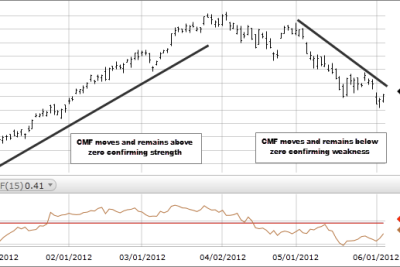
How Imatinib Works: Understanding the Gleevec Cancer Drug

Imatinib, commonly known as Gleevec, is a revolutionary cancer drug that has transformed the treatment landscape for certain types of malignancies, particularly chronic myelogenous leukemia (CML). This targeted therapy was approved by the FDA in 2001 and has already shown remarkable efficacy, boasting nearly a 90% five-year survival rate for untreated CML patients. Understanding how imatinib works at a molecular level is crucial for both healthcare professionals and patients navigating their treatment options. By inhibiting specific proteins associated with cancer cell proliferation, imatinib offers a different approach than traditional chemotherapy, which often targets all rapidly dividing cells rather indiscriminately.
In addition to its primary indication for CML, the imatinib drug has been proven effective for treating advanced gastrointestinal stromal tumors (GISTs). With orally administered doses and manageable side effects, imatinib stands out as a well-tolerated treatment option. However, like any medication, it is important to understand potential interactions and precautions when using Gleevec. This article delves into the details of how imatinib works, providing a comprehensive overview of its mechanism of action, efficacy, administration, and impact on cancer treatment.
What is Imatinib?
Imatinib is a small molecule that serves as a targeted therapy for several cancers, primarily CML and GISTs. As a specific inhibitor of the bcr-abl tyrosine kinase, imatinib selectively blocks aberrant signaling pathways that drive cancer cell growth and survival. The discovery of this drug marked a significant milestone in oncology, facilitating a shift towards personalized medicine where treatments can be tailored based on individual cancer profiles.
The Mechanism of Action
The effectiveness of the Gleevec drug lies in its ability to interfere with the signaling mechanisms within cancer cells. Imatinib works by binding to the active site of the bcr-abl tyrosine kinase, preventing its normal function, which is essential for the proliferation and survival of cancer cells. This targeted action leads to reduced cell division and increased apoptosis—or programmed cell death—in malignant cells, thereby mitigating the progression of diseases such as CML.
Targeting Bcr-Abl Tyrosine Kinase
The bcr-abl fusion protein is a product of a genetic abnormality known as the Philadelphia chromosome, which is characteristic of CML. This fusion protein exhibits constitutive (always active) tyrosine kinase activity, resulting in uncontrolled cell proliferation. Imatinib specifically targets this protein, acting as a competitive inhibitor that binds to its ATP-binding site. By doing so, it effectively blocks the enzyme's activity, dampening the aberrant signals that lead to the overproduction of myelogenous cells in the bone marrow.
Indications for Use
Beyond chronic myelogenous leukemia, imatinib is also effective in treating gastrointestinal stromal tumors (GISTs), which are rare tumors found in the digestive tract. The targeted nature of imatinib makes it suitable for treating tumors characterized by specific genetic mutations involving the c-KIT receptor, present in a significant number of GISTs. Its ability to selectively inhibit malignant cell growth has established imatinib as a critical component in the management of these cancers.
Efficacy in Treating Chronic Myelogenous Leukemia (CML)
The efficacy of imatinib in treating CML has been extensively studied. Following its introduction, clinical trials have shown that imatinib therapy leads to rapid and durable responses in a majority of newly diagnosed patients. In fact, long-term studies indicate that about 90% of patients achieve complete cytogenetic response (no evidence of the Philadelphia chromosome) within the first few years of treatment. Such outcomes highlight the transformative impact of Gleevec therapy in the management of CML.
Effectiveness Against Gastrointestinal Stromal Tumors (GISTs)
When it comes to gastrointestinal stromal tumors, the imatinib drug has been shown to significantly improve overall survival rates. Studies indicate that patients with advanced GISTs treated with imatinib experience a higher likelihood of disease control compared to those receiving conventional therapies. The ability of imatinib to target the unique mutations within these tumors offers hope for improved treatment strategies in this challenging area of oncology.
Administration and Dosage
Imatinib is available in oral tablet form, making it an attractive option for outpatients who may prefer an at-home treatment regimen. The standard starting dose for adults with CML is usually 400 mg once daily, though in cases of GISTs, the dose may be increased to 800 mg per day, depending on the individual's tolerance and treatment response. It is critical for patients to adhere to their prescribed dosage while also maintaining regular follow-ups to monitor for potential side effects and adjust treatment as necessary.
Side Effects and Tolerability
Although Gleevec is generally well-tolerated, some patients may experience side effects. The most common adverse reactions include nausea, vomiting, diarrhea, fatigue, and rash. In most cases, these side effects are mild to moderate and tend to decrease over time as the body adjusts to the medication. However, it is essential for patients to report any severe or concerning symptoms to their healthcare provider, particularly since elderly patients may be more susceptible to these side effects.
Drug Interactions and Precautions
When taking imatinib, certain precautions should be observed to avoid potentially serious drug interactions. Patients must inform their healthcare team about all medications, supplements, and over-the-counter products they are using, as some drugs can alter the metabolism of imatinib, leading to increased toxicity or diminished efficacy. Monitoring liver function and blood counts is also critical, as imatinib can affect hematologic parameters.
The Impact of Imatinib on Cancer Treatment
Imatinib represents a groundbreaking advance in the field of oncology, particularly in the treatment of CML and GISTs. Its ability to specifically target molecular abnormalities associated with these cancers brings forth a new paradigm in cancer therapy that prioritizes personalized treatment plans based on the unique genetic characteristics of a patient's tumor. The introduction of imatinib has not only improved survival rates but has also fundamentally changed the way clinicians approach cancer treatment.
Conclusion
Understanding how imatinib works is integral to appreciating the drug’s role in modern cancer treatment. As Gleevec continues to demonstrate effectiveness against specific malignancies while minimizing adverse reactions, its significance in oncology becomes ever more apparent. The imatinib drug exemplifies the potential of targeted therapies, offering patients renewed hope for better outcomes and improved quality of life. As research advances, ongoing studies aim to expand the use of imatinib and similar agents, paving the way for the future of personalized medicine in cancer therapy.
Did you find this article helpful? How Imatinib Works: Understanding the Gleevec Cancer Drug See more here Education.
Leave a Reply






Related posts